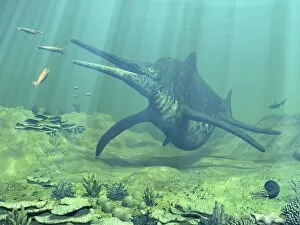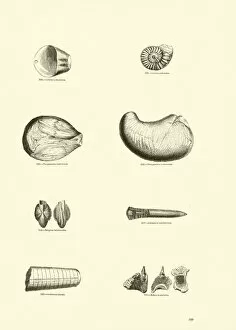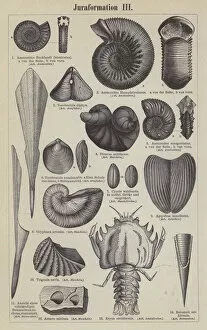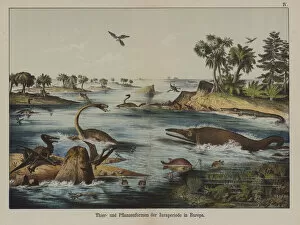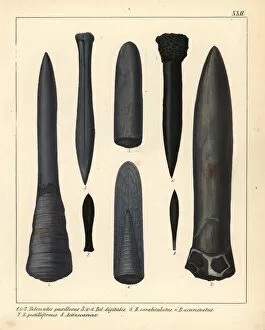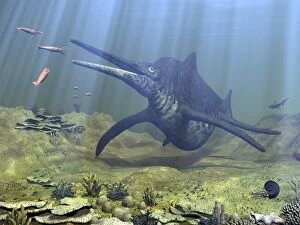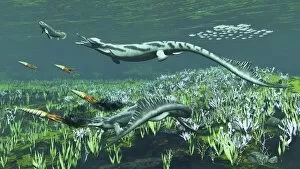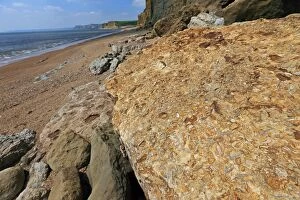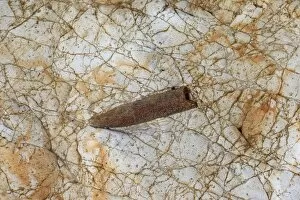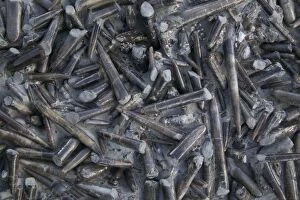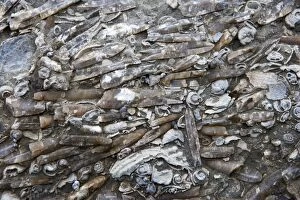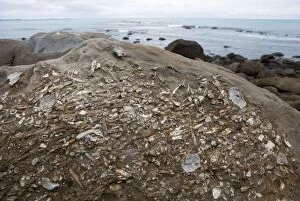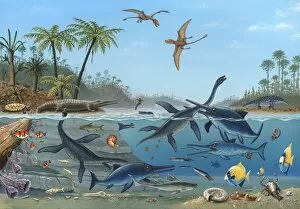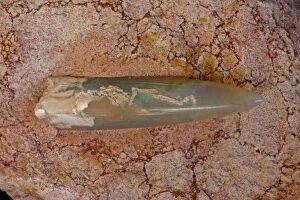Belemnites Collection
Belemnites, the ancient squid-like creatures that roamed the oceans during the Jurassic period, have left behind a fascinating legacy in the form of fossils
For sale as Licensed Images
Choose your image, Select your licence and Download the media
Belemnites, the ancient squid-like creatures that roamed the oceans during the Jurassic period, have left behind a fascinating legacy in the form of fossils. These enigmatic cephalopods were not only preyed upon by massive marine reptiles like Shonisaurus but also played an essential role in their ecosystem. As depicted in artwork from The Pictorial Museum of Animated Nature, Belemnites coexisted with various other animals and plants during this era. Their presence can be traced through beautifully engraved pages showcasing Jurassic fossils found across Europe. These ancestors of modern-day squids had long rostrums that are often discovered preserved in rocks along beaches like those in Dorset and Norfolk, England. The significance of Belemnite fossils is evident as they provide valuable insights into Earth's history. In Germany's Bayern region, fossilized Belemnites serve as a testament to life millions of years ago. Meanwhile, on New Zealand's South Island coastline near Oaro, remnants of these creatures can be found alongside snails and other marine fossils from the Late Cretaceous period. These remarkable finds allow us to piece together a picture of prehistoric life beneath the waves. From Cymbospondylus, an early Triassic ichthyosaur hunting its prey to Shonisaurus attempting to make a meal out of a school - each discovery adds another layer to our understanding. So next time you stumble upon one such fossil or marvel at an engraving depicting these ancient creatures, take a moment to appreciate how they connect us with Earth's distant past and remind us that even millions of years later, their story continues to captivate our imagination.

